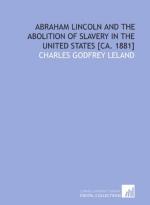|
This section contains 8,382 words (approx. 28 pages at 300 words per page) |

|
SOURCE: Coleman, Deidre. “Conspicuous Consumption: White Abolitionism and English Women's Protest Writing in the 1790s.” ELH 61, no. 2 (summer 1994): 341-62.
In the following essay, Coleman argues that even as white female abolitionists in the late eighteenth century tried to connect their own subjugation to the plight of slaves, their writings tacitly created insurmountable boundaries between whites and blacks.
In this paper I wish to examine two overlapping areas of middle-class polemic from the 1790s: white abolitionism and English women's protest writing. A certain polarization has crept into recent discussions of abolitionism, with some critics arguing that a relatively benign “cultural racism” in the eighteenth century came to be supplanted by a more aggressive biological racism.1 Patrick Brantlinger, for instance, characterizes late eighteenth-century abolitionist writing as more “positive” and “open-minded” about Africa and Africans than the racist and evolutionary accounts that were to follow in the wake of Victorian social...
|
This section contains 8,382 words (approx. 28 pages at 300 words per page) |

|


